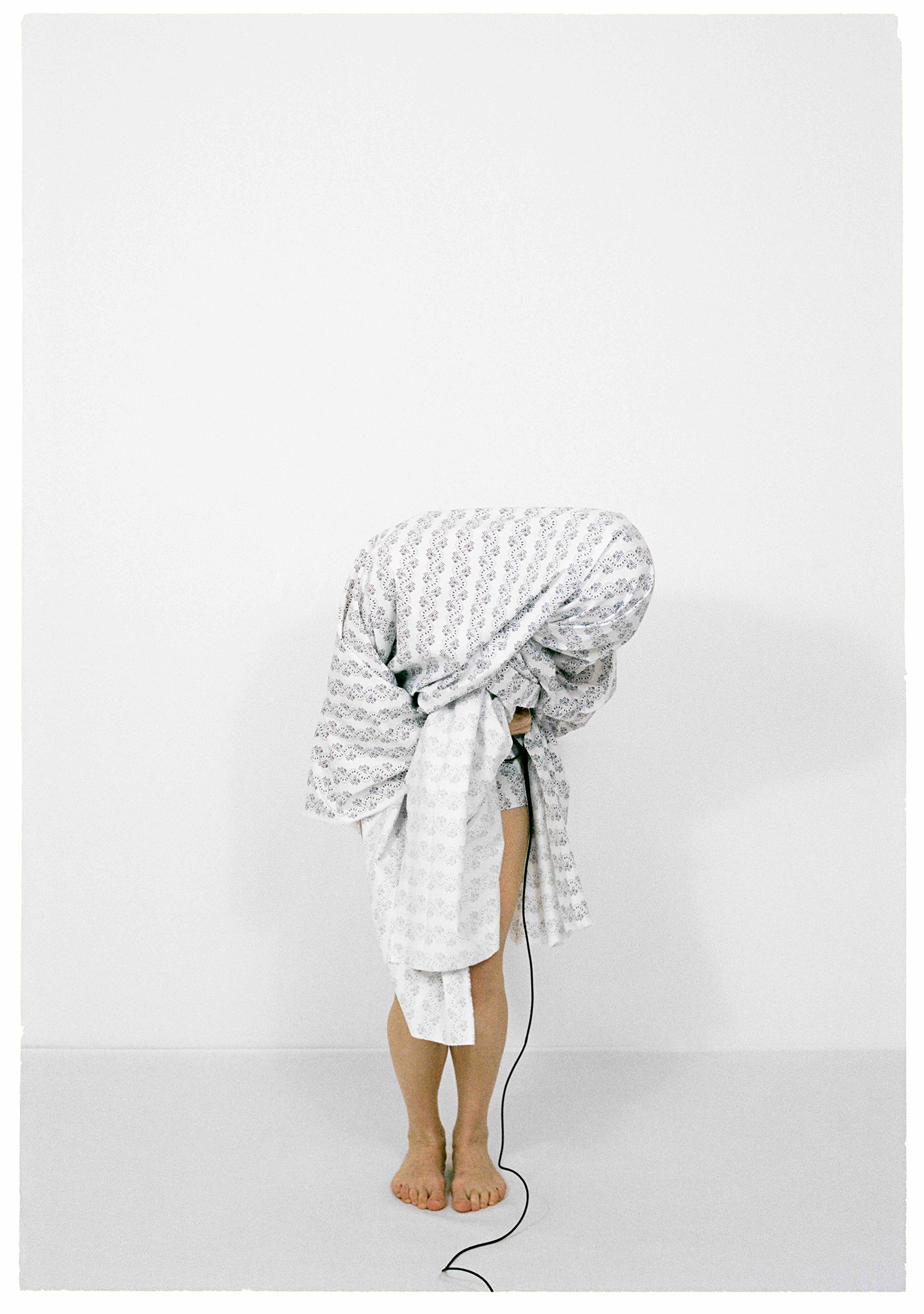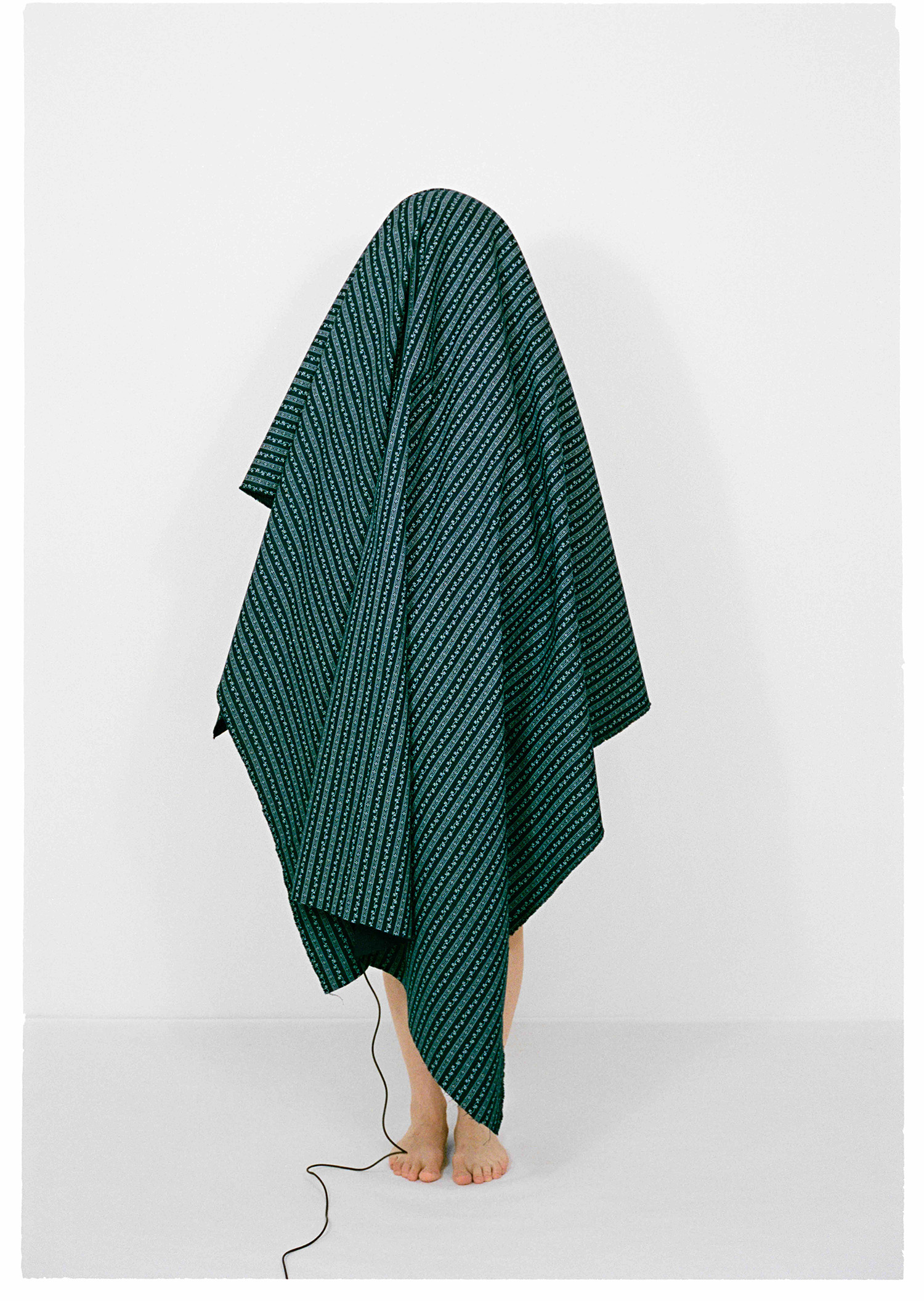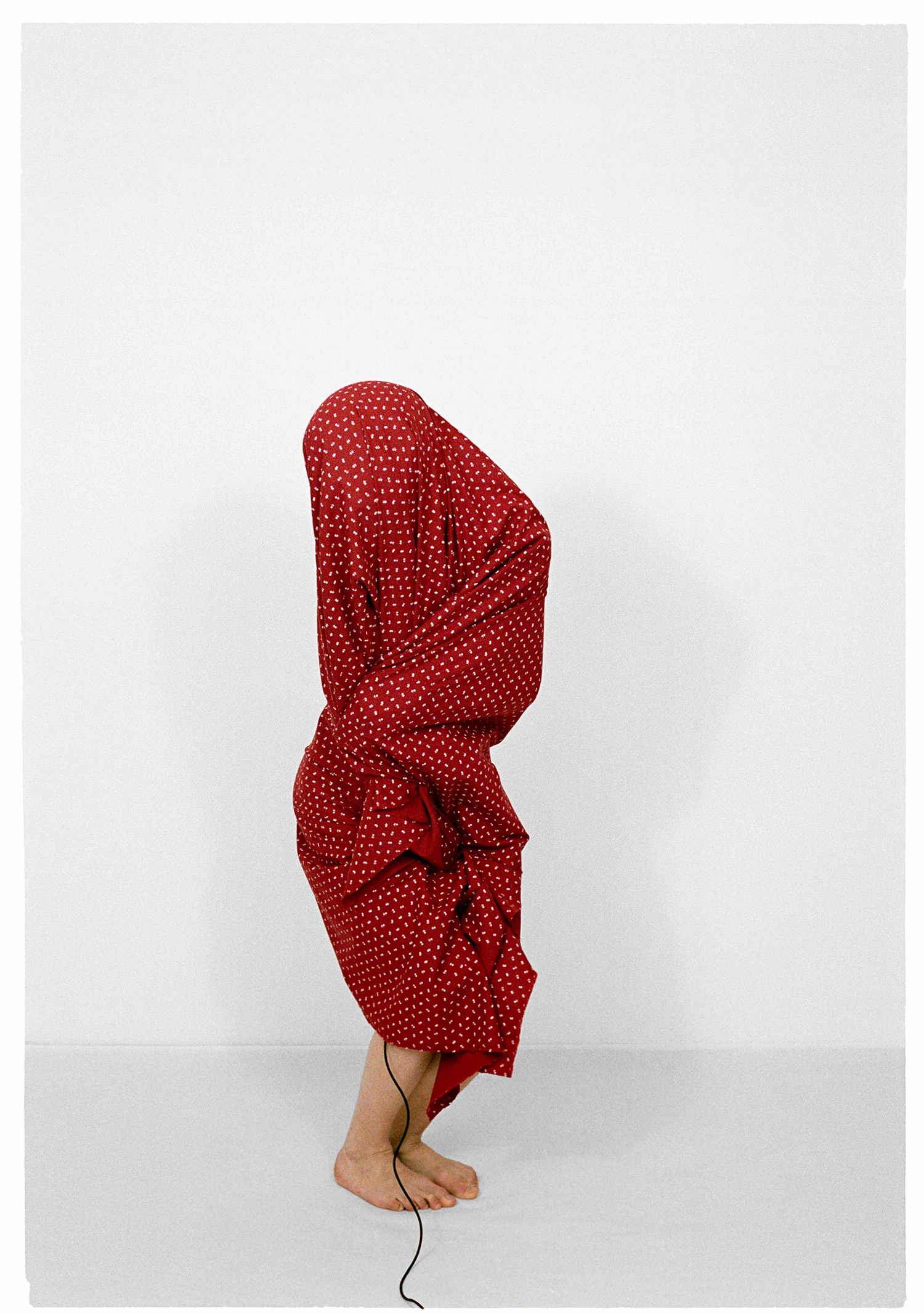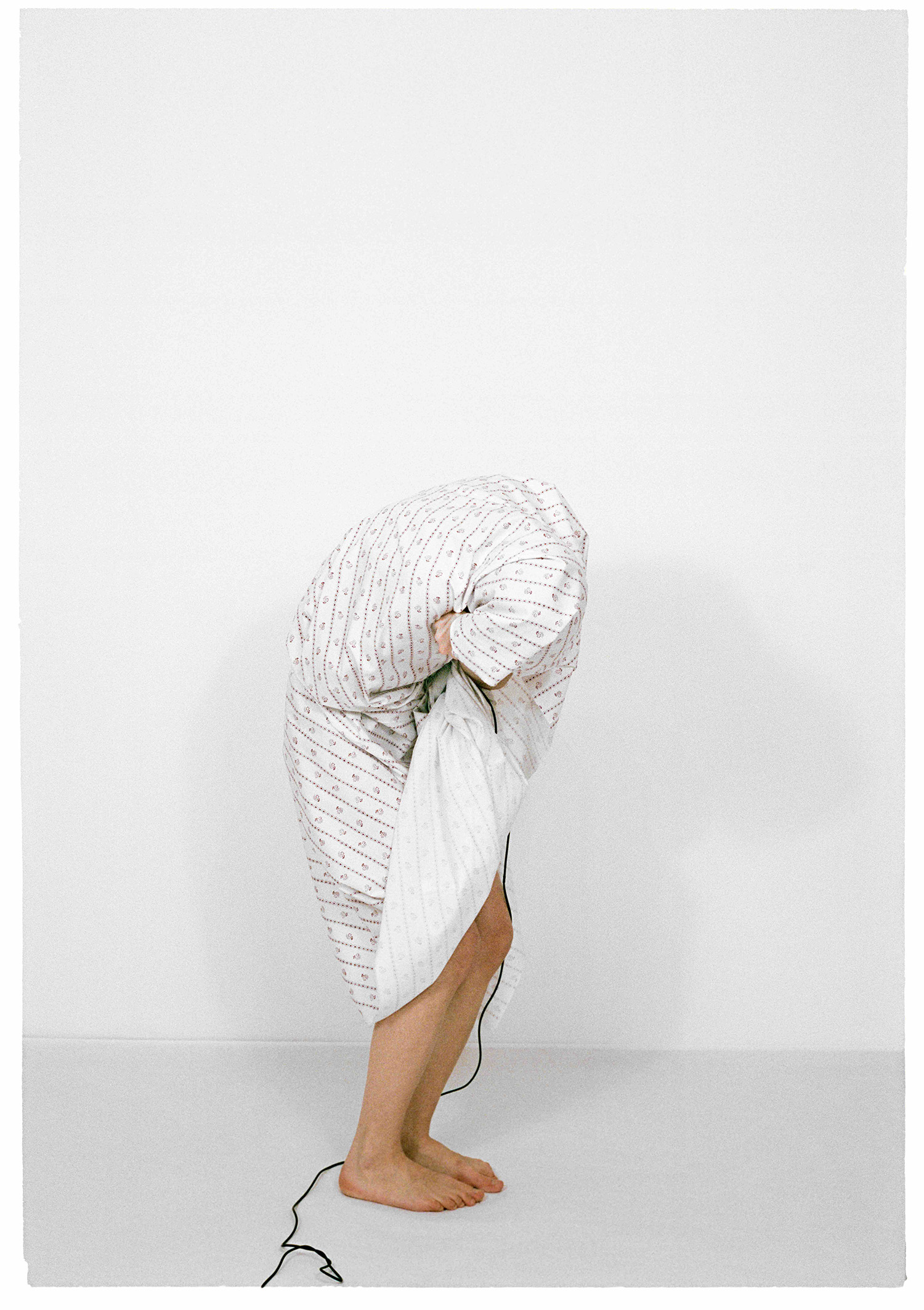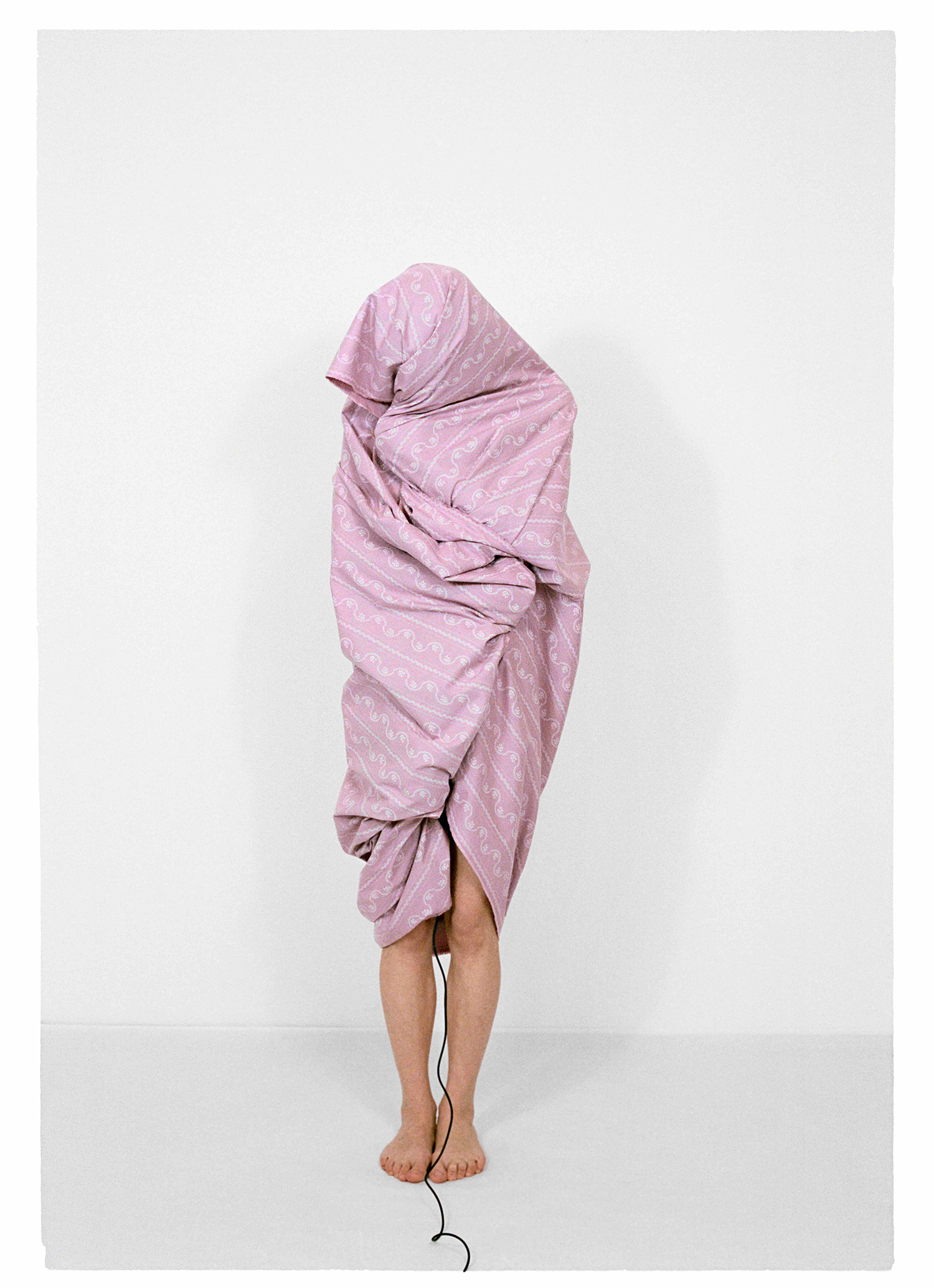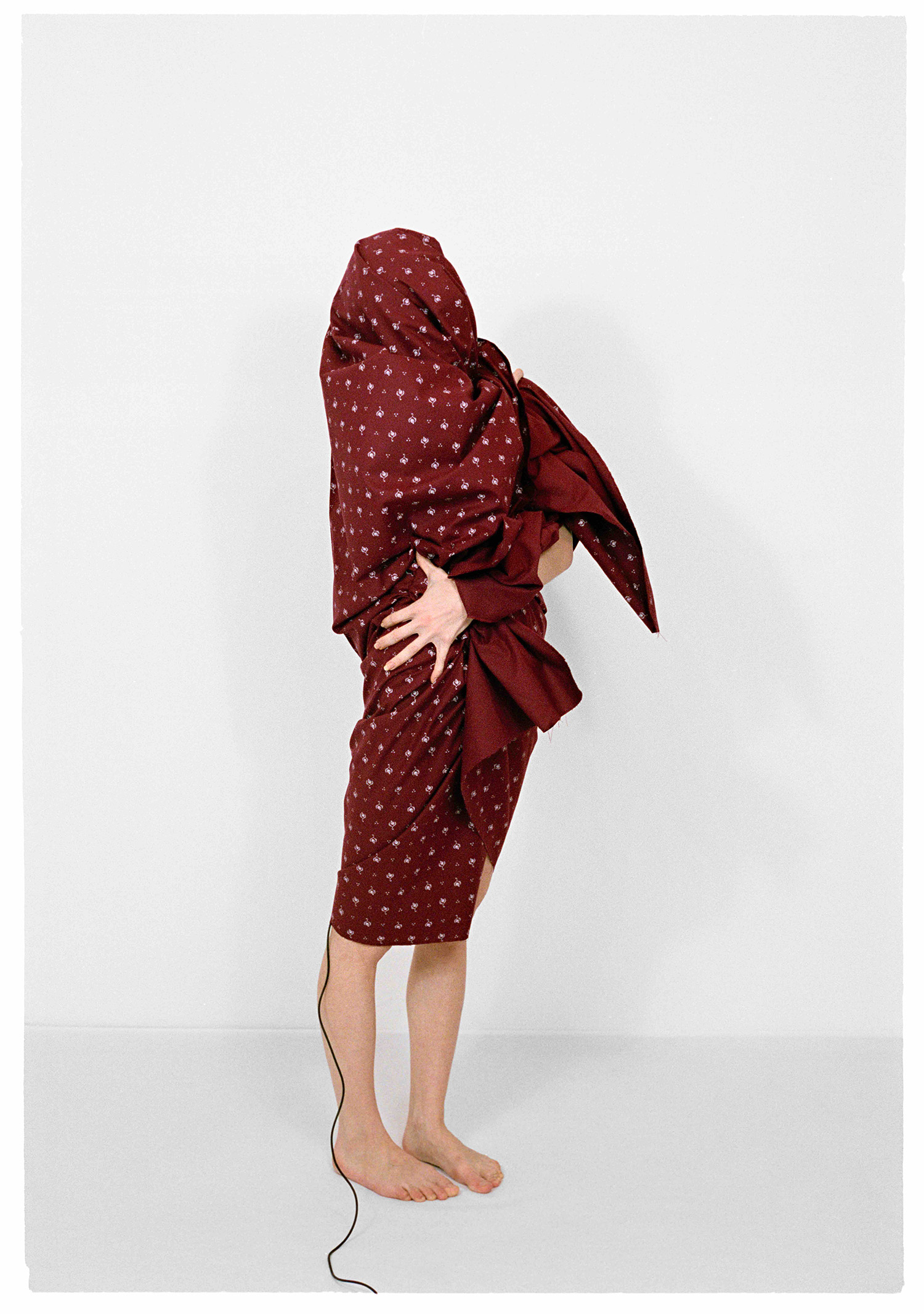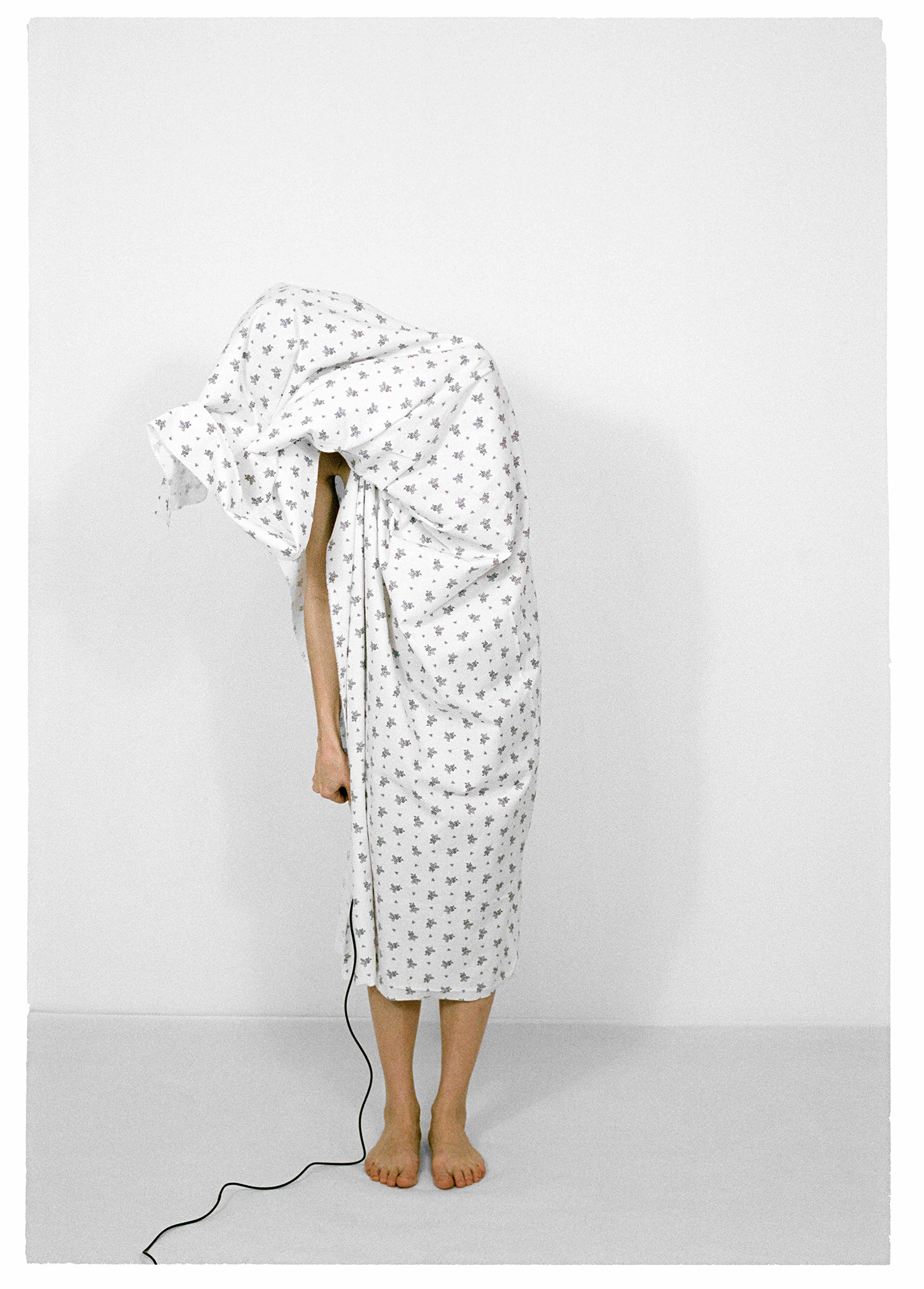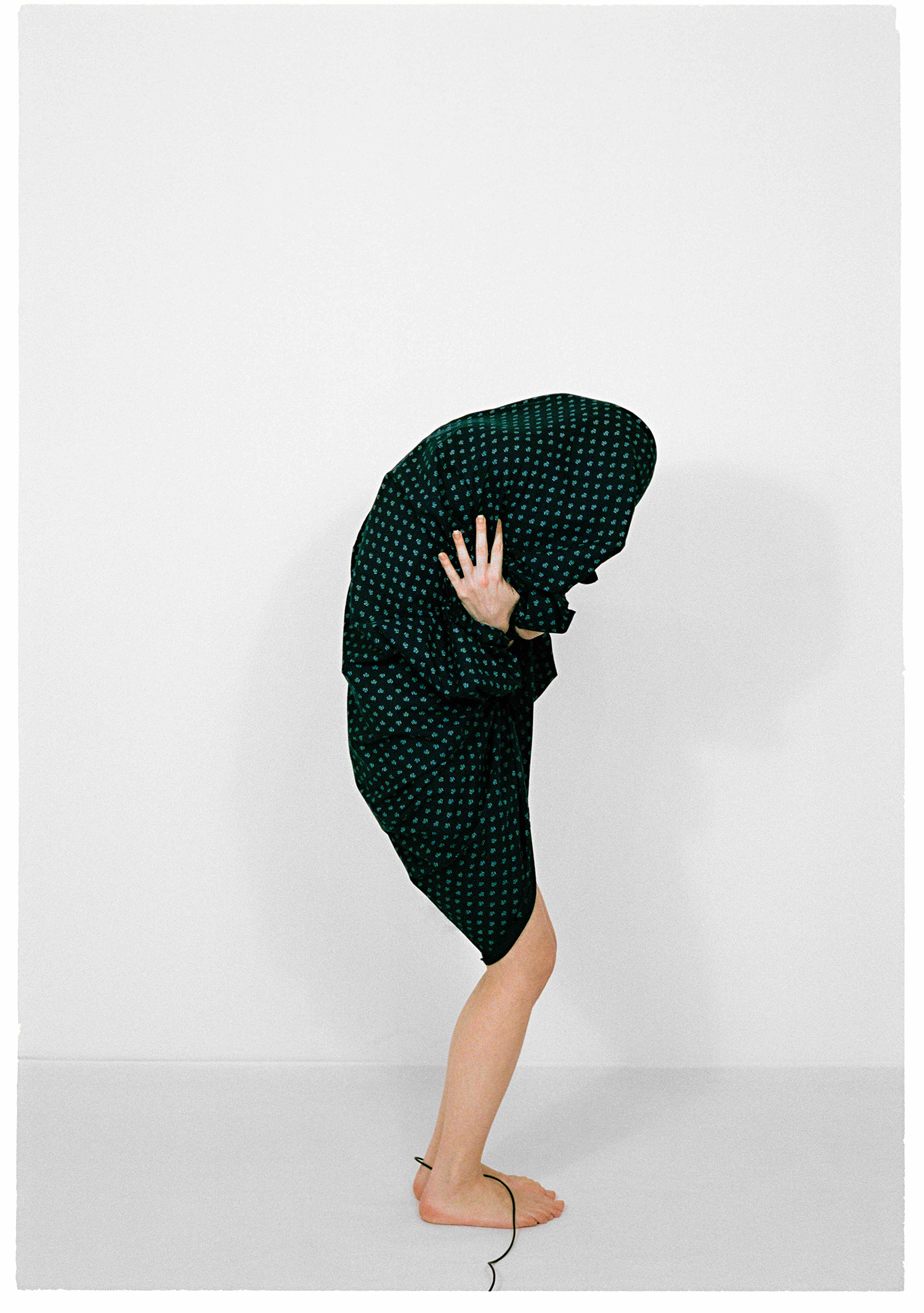… natürlich Stapf
2017, „The clan“ Stapf „has been established in Imst (Tyrol) since the 17th century. Christoph Stapf had already built a hand weaving mill here in 1615. The descendants of Christoph Stapf were generally called the „Stoffler“ in Imst. The Stapf-Textil company, a factory that has been producing since 1843 dirndl & traditional fabrics and tablecloths, woven and printed fabrics and all sorts of related textile, still exists today. “ (Text, October 1981)
„After the bankruptcy in 1992, the textile factory was taken over by an outside company and newly founded. Since 1993, no direct descendant of the Stapf family has been involved in this company as a shareholder, but the name has remained the same. “ Quote, Walter Paral, current CEO
Based on my own surname as an identification area, this photo series deals photographically with the body as a medium.
The basis of my work is the examination of one’s own family history. Both my grandfather and my father worked in the company until 1984. I’ve always been surrounded by these fabrics and their traditions. This work is like a photographic autobiography.
The focus is on the the self-staging. A performance only for the camera, isolated & intimate, it is made accessible to the viewer only through photography alone and so made tangible.
The movements are imaging and intuitive, they combine with the fabrics to different gestures. The fabrics nestle around the female body, encasing and guarding it, making me almost disappear underneath it. This creates a symbiosis of materialism and humanity, a dynamic between substance and body. The conscious use of analogue photographic material is a combination of a tactile element and an action – photography and body. Similar to a film, physical and material coincide, creating a space between haptic and image that focuses on the process, on the conscious and intimate image construction. The individual repetitions of the patterns on the fabrics, as well as the grain of the film material are superimposed.
The body becomes a projection surface, the fabrics used are a noticeable element and the femininity assigned to them adorns and decorates the body.
Photography serves as translation tool and stage. The use of the self-image as a critical artistic practice allows one to explore identity concepts through different aspects of presentation. Conventional family reproduction meets free and self-determined self- production, structure meets space.
The symbolically charged aesthetics create certain associations that want to hide the female body as a potential source of pleasure, but also leaves some space open for interpretation. Moreover, these photographs are also intended to address the problematic relationship between appearance and identity, as well as the body codes that are firmly anchored in the cultural space in which we are embedded.
Pigment Prints, analogue | 160 x 110cm | Edition 5+2AP
+ „Musterbuch“, booklet, 25,5 x 19,5cm
„Die Sippe „Stapf“ ist nachweislich seit dem 17. Jahrhundert in Imst (Tirol) ansässig. Christoph Stapf hatte hier bereits 1615 eine Handweberei errichtet. Die Nachkommen des Christoph Stapf wurden in Imst allgemein die „Stoffler“ genannt. Die Firma Stapf-Textil, eine Fabrik, die schon seit 1843 Dirndl- & Trachtenstoffe und Tischdecken, gewebte und bedruckte Stoffe und allerlei Dazugehöriges textil produziert, besteht heute noch.“
(Text, Oktober 1981)
„Nach dem Konkurs 1992, wurde das Textilwerk von einer außenstehenden Firma übernommen und neu gegründet. Seit 1993 ist kein direkter Nachkomme der Familie Stapf mehr in dieser Firma als Gesellschafter involviert, der Name blieb aber der Selbe.“
Zitat, Walter Paral, aktueller Geschäftsführer
Ausgehend von dem eigenen Nachnamen als Identifikationsfläche, beschäftigt sich meine Diplomarbeit fotografisch mit dem Körper als Medium.
Die Grundlage meiner Arbeit bildet die Auseinandersetzung mit der eigenen Familiengeschichte. Sowohl mein Großvater, als auch mein Vater haben bis 1984 in der Firma gearbeitet. Ich war schon immer von diesen Stoffen und deren Tradition umgeben. Diese Arbeit ist wie eine fotografische Autobiografie.
Die Selbstinszenierung steht im Mittelpunkt. Eine Performance nur für die Kamera, isoliert & intim, sie wird dem Betrachter erst durch die Fotografie alleine zugänglich und erfahrbar gemacht.
Die Bewegungen sind bildgebend und intuitiv, sie verbinden sich mit den Stoffen zu unterschiedlichen Gesten. Die Stoffe schmiegen sich um den weiblichen Körper, umschließen und behüten ihn, lassen mich fast darunter verschwinden. So entsteht eine Symbiose von Materiellem und Menschlichem, eine Dynamik zwischen Stoff und Körper.
Die bewusste Verwendung von analogem Fotomaterial bildet eine Verbindung von einem fühlbaren Element und einer Handlung – Fotografie und Körper. Wie auf einem Film kommen Körperliches und Stoffliches überein, es entsteht ein Spielraum zwischen Haptik und Abbildung, dessen Augenmerk auf dem Prozess, auf der bewussten, intimen Bildkonstruktion liegt. Die einzelnen Wiederholungen der Muster auf den Stoffen, so wie die der Körnung des Filmmaterials liegen übereinander.
Der Körper wird zur Projektionsfläche, die verwendeten Stoffe sind ein spürbares Bildelement, die ihnen zugeteilte Weiblichkeit schmückt und dekoriert den Körper.
Die Fotografie dient als Übersetzungswerkzeug und Bühne. Die Verwendung des Selbstbildes als kritische künstlerische Praxis erlaubt es, Identitätsbegriffe durch verschiedene Aspekte der Darstellung zu erforschen. Konventionelle familiäre Reproduktion trifft hier auf die freie und eigenbestimmte Selbstproduktion, Struktur und Freiraum treffen aufeinander.
Die symbolisch aufgeladene Ästhetik erzeugt gewisse Assoziationen, die den weiblichen Körper als potentielle Lustquelle verhüllt wissen wollen, lässt aber auch Offenheit für Interpretation. Überdies sollen diese Fotografien auch die problematische Beziehung zwischen Erscheinung und Identität thematisieren, so wie Körpercodes ansprechen, die in dem kulturellen Raum in dem wir eingebettet sind, fest verankert sind.

